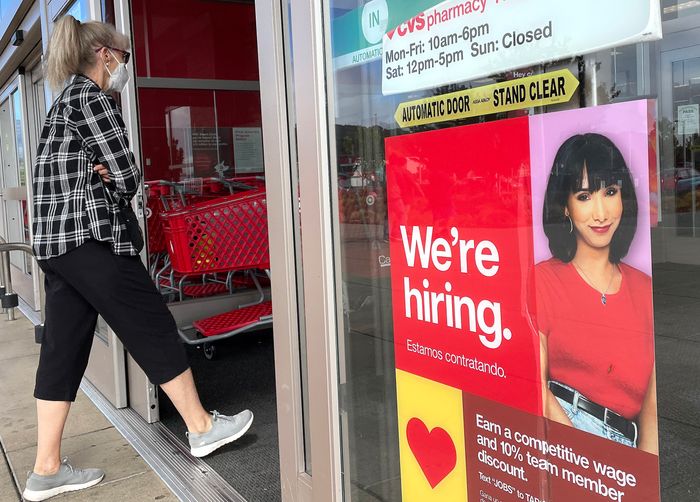The numbers: The U.S. created a robust 263,000 new jobs in November, a historically strong pace of hiring that’s good for workers but that also threatens to prolong a bout of high U.S. inflation.
The still-rapid gains in hiring have become a big source of angst at the Federal Reserve. Senior central bank officials worry wage growth stemming from a tight labor market is adding upward pressure to already high U.S. inflation.
The Fed is expected to keep raising interest rates — and push the economy closer to recession — until hiring slows, labor shortages ease and wage growth wanes.
U.S. stocks fell in premarket trades and bond yields rose after the report. Economists polled by The Wall Street Journal had forecast smaller 200,000 increase in new jobs.

The U.S. economy created 263,000 new jobs in November — far more than Wall Street had expected.
Justin Sullivan/Getty Images
The unemployment rate was unchanged at 3.7%, the government said Friday, and stayed close to a half-century low.
Hourly pay, meanwhile, rose by a sharp 0.6% last month to an average of $32.82. That’s the biggest advance in 13 months and was far stronger than Wall Street expected.
The increase in wages over the past year climbed to 5.1% from 4.9% in the prior month. Wages are still rising much faster than they were before the pandemic, when they rose about 2% to 3% a year.
The demand for labor is still strong,” said chief economist Steve Blitz of TS Lombard. “It’s still putting upward pressure on wages.”
The Fed has embarked on a series of increases in U.S. interest rates to try to slow the economy just enough to tame inflation without tipping the economy into recession. The bank is trying to bring inflation back down to pre-pandemic levels of 2% from the current rate of 6%, based on the PCE price index.
The tough medicine, senior Fed officials figure, is likely to lift the unemployment rate to as high as 5% by 2023. Some Wall Street analysts believe the jobless rate will go even higher if a recession takes place as many forecast.
Higher borrowing costs slow growth by depressing consumer spending and business investment, the two key pillars of the economy.
Another potential pressure valve for the economy is not offering any relief. The share of working-age people in the labor force — known as the labor-force participation rate — fell a tick to 62.1% to mark the third drop in a row.
The lack of people looking for work is another big factor contributing to the labor shortage.
Big picture: The economy is slowing, but the labor force is still an oasis of strength.
For the Fed, it’s too much of a good thing. The central bank wants the demand and supply of labor to become more balanced to ease the pressure on wages.
The ongoing labor shortage, however, might be a savings grace for the economy. Many businesses have told the Fed they plan to hold on to more workers than usual even if the economy slows because it’s been so hard to hire in the first place.
If that’s the case, the economy might escape a recession altogether or only suffer a short and shallow downturn, some economists say.
Market reaction: The Dow Jones Industrial Average DJIA, +0.68% and S&P 500 SPX, -0.09% were set to decline sharply in Friday trades.


